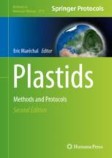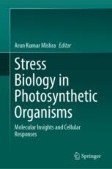Search
Search Results
-
Taming the perils of photosynthesis by eukaryotes: constraints on endosymbiotic evolution in aquatic ecosystems
An ancestral eukaryote acquired photosynthesis by genetically integrating a cyanobacterial endosymbiont as the chloroplast. The chloroplast was then...

-
Complex Endosymbioses I: From Primary to Complex Plastids, Serial Endosymbiotic Events
A considerable part of the diversity of eukaryotic phototrophs consists of algae with plastids that evolved from endosymbioses between two...
-
Gene gain facilitated endosymbiotic evolution of Chlamydiae
Chlamydiae is a bacterial phylum composed of obligate animal and protist endosymbionts. However, other members of the...

-
Emergence of putative energy parasites within Clostridia revealed by genome analysis of a novel endosymbiotic clade
The Clostridia is a dominant bacterial class in the guts of various animals and are considered to nutritionally contribute to the animal host. Here,...

-
On the complexity of non-binary tree reconciliation with endosymbiotic gene transfer
Reconciling a non-binary gene tree with a binary species tree can be done efficiently in the absence of horizontal gene transfers, but becomes...

-
Endosymbiotic Origin of Chloroplasts in Plant Cells’ Evolution
AbstractThe theory of endosymbiotic origin of chloroplasts has become basal in present-day biology. In this regard, the emergence of eukaryotic...

-
Evolutionary Mechanisms in the Transition Towards Parasitic Lifestyle: The Role of Endosymbiotic Organelles
Understanding the transition to parasitic life evolution can shed light about eukaryotic complexity. Parasites stand as a good example of plasticity...
-
The origin of chloroplasts: Constantin S. Merezhkowsky (1855–1921) and symbiogenesis
One century ago (Jan. 9, 1921), the Russian biologist Constantin S. Merezhkowsky, who proposed the endosymbiotic origin of plastids, committed...

-
Endosymbioses: Origin and Diversity of Photosynthetic Eukaryotes and Their General Genetic Exchange Modes
It was through endosymbiosis that an archaeal host incorporated a free-living proteobacterium.
-
An early origin of iron–sulfur cluster biosynthesis machineries before Earth oxygenation
Iron–sulfur (Fe–S) clusters are ubiquitous cofactors essential for life. It is largely thought that the emergence of oxygenic photosynthesis and...

-

-
Photosynthetic Organisms: Their Existence in Evolutionary Prospective
Photosynthesis is a very old process on this Earth. Based on fossil discoveries and chemical evidence, cyanobacteria first appeared 2.5–2.6 billion...
-
How Did Thylakoids Emerge in Cyanobacteria, and How Were the Primary Chloroplast and Chromatophore Acquired?
The emergence of thylakoid membranes in cyanobacteria is a key event in the evolution of all oxygenic photosynthetic cells, from prokaryotes to...
-
The Origin of Genetic Code and Translation in the Framework of Current Concepts on the Origin of Life
AbstractThe origin of genetic code and translation system is probably the central and most difficult problem in the investigations on the origin of...

-
Chemiosmosis and the Origin of Eukaryotes
Because their energy-converting membranes are on the outside of the cell, surface-to-volume constraints limit the size and complexity of prokaryotic...
-
Coral–algal endosymbiosis characterized using RNAi and single-cell RNA-seq
Corals form an endosymbiotic relationship with the dinoflagellate algae Symbiodiniaceae, but ocean warming can trigger algal loss, coral bleaching...

-
Phylogenetic Evidence for the Endosymbiotic Origin of Organelles
In this chapter, we will examine various pieces of evidence for the endosymbiotic origin of plastids. As we found in Part I, similarities of various...
-
The Origin of Eukaryotic Cells and Multicellular Organisms
First signs of life on EarthEarth were most probably in the form of unicellular organisms that rapidly diverged into different types while adapting...
-
Complex origins of chloroplast membranes with photosynthetic machineries: multiple transfers of genes from divergent organisms at different times or a single endosymbiotic event?
The paradigm “cyanobacterial origin of chloroplasts” is currently viewed as an established fact. However, we may have to re-consider the origin of...

-
J-Domain Proteins Orchestrate the Multifunctionality of Hsp70s in Mitochondria: Insights from Mechanistic and Evolutionary Analyses
Mitochondrial J-domain protein (JDP) co-chaperones orchestrate the function of their Hsp70 chaperone partner(s) in critical organellar processes that...
